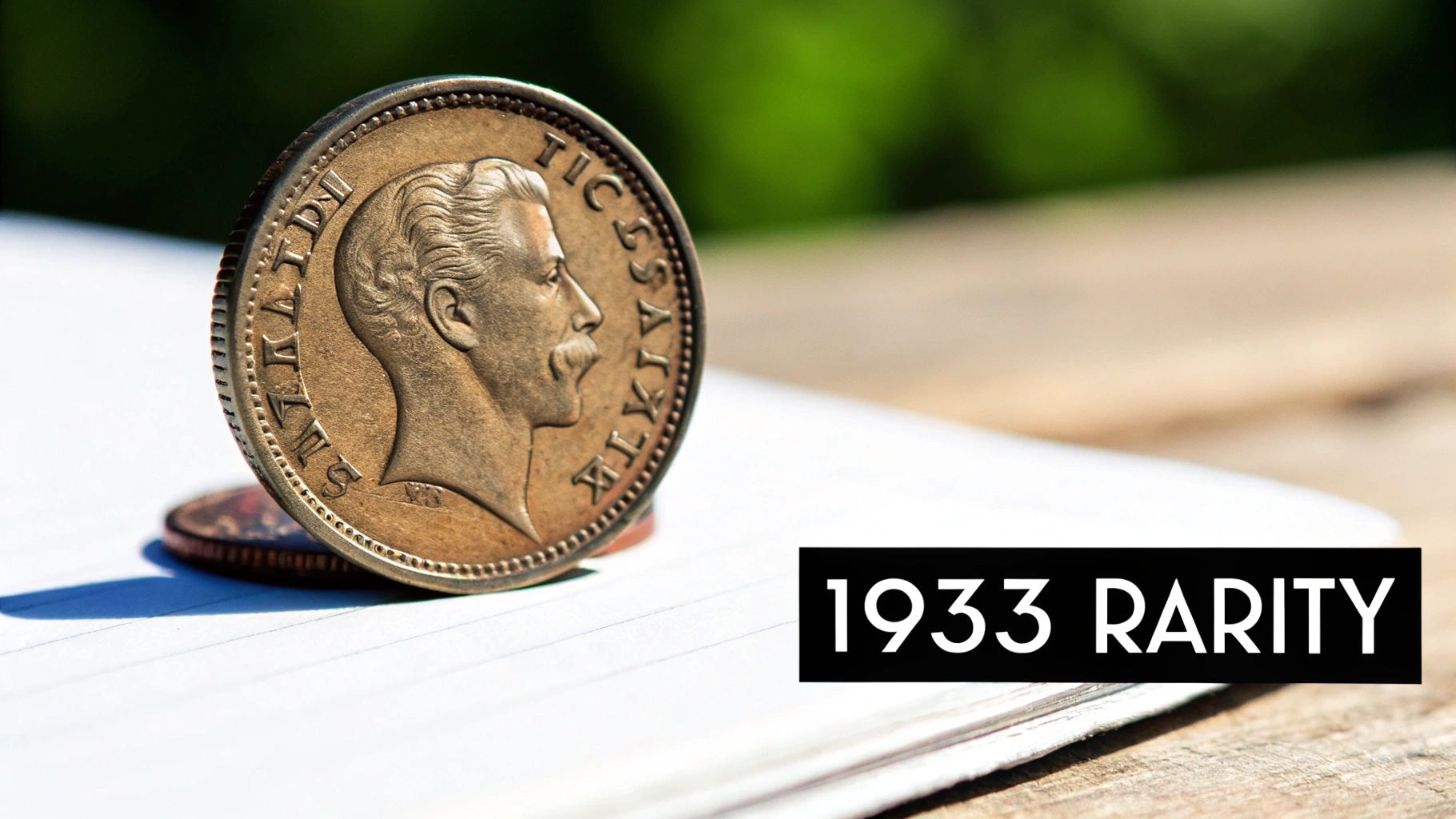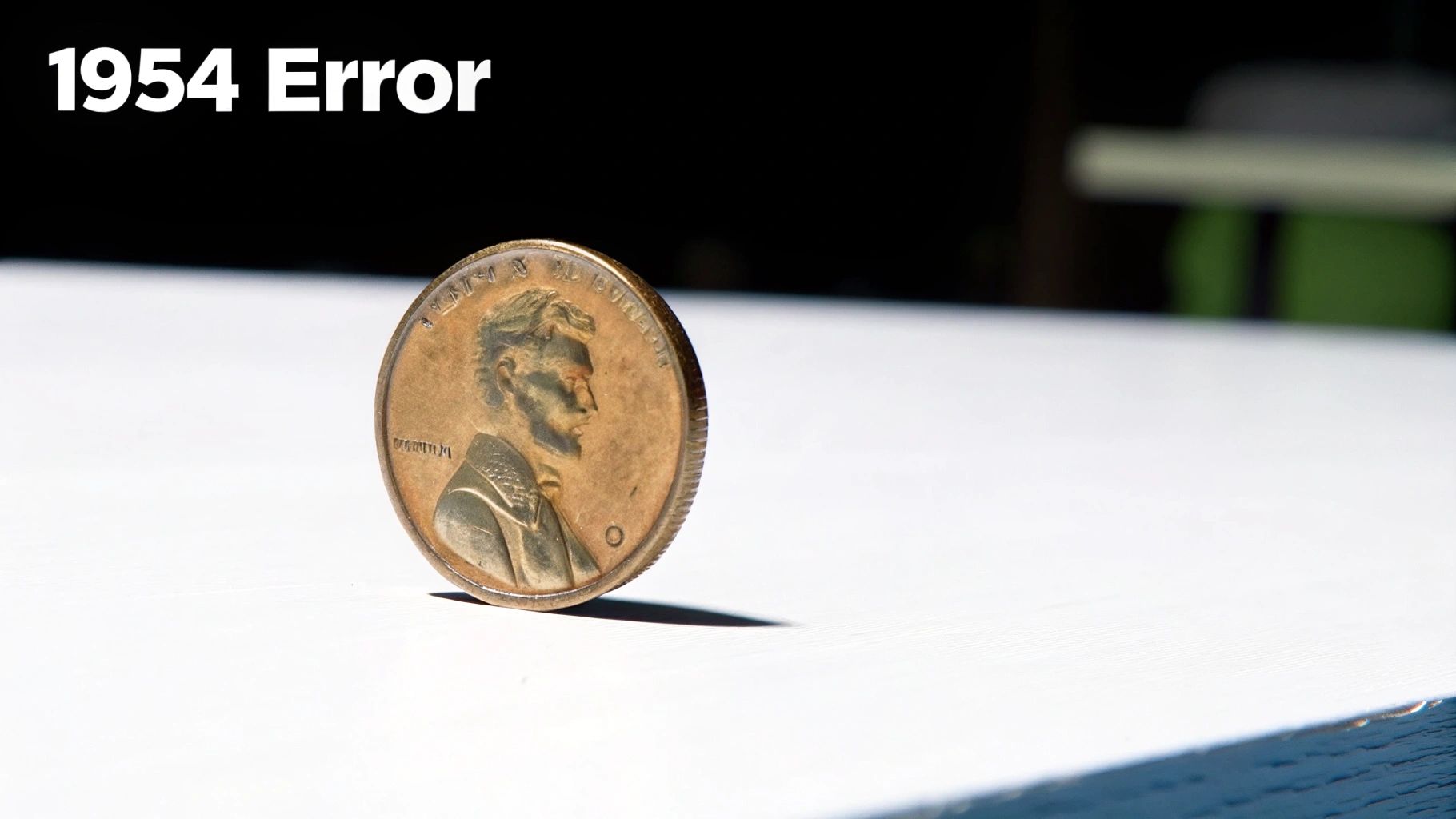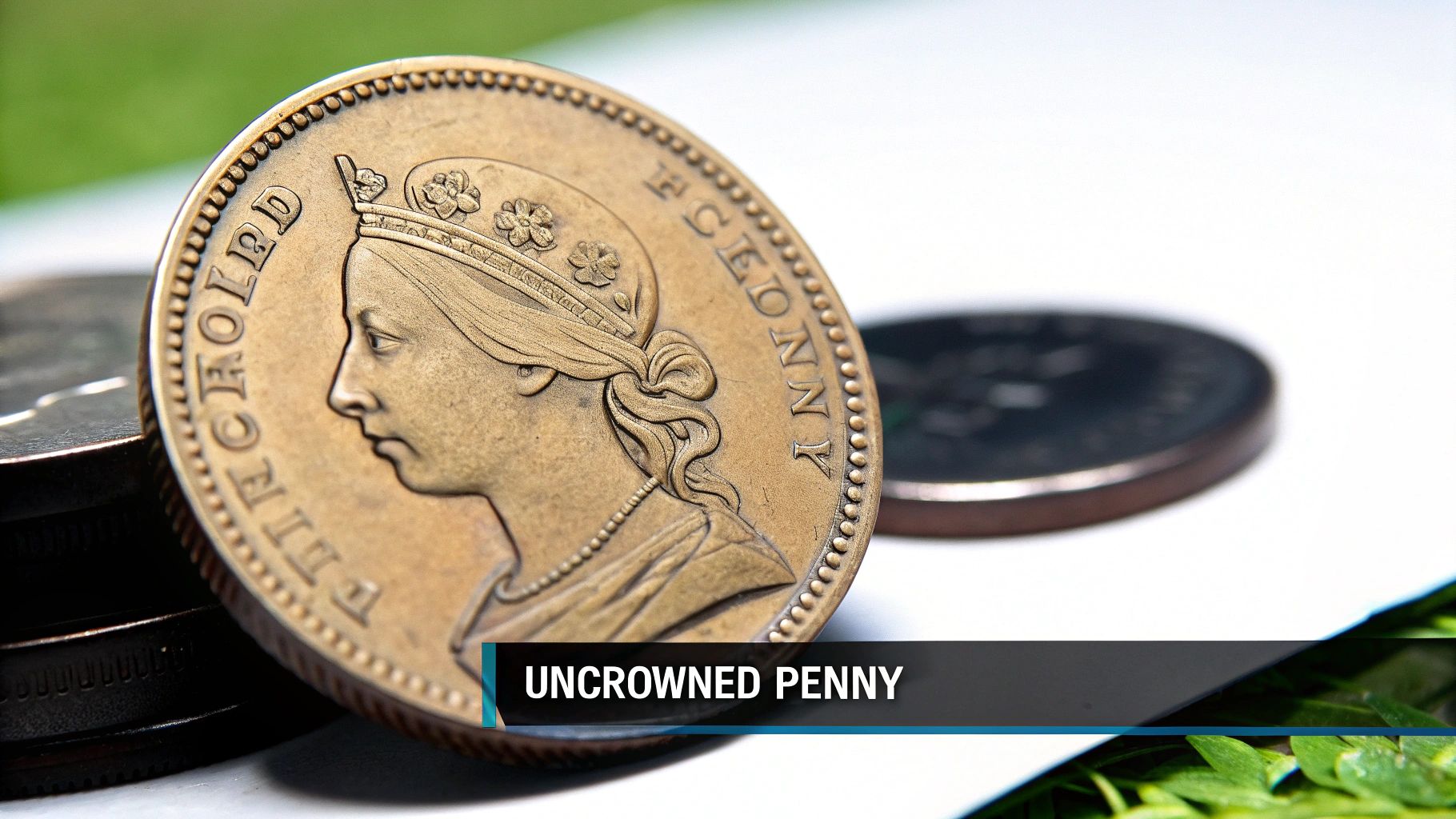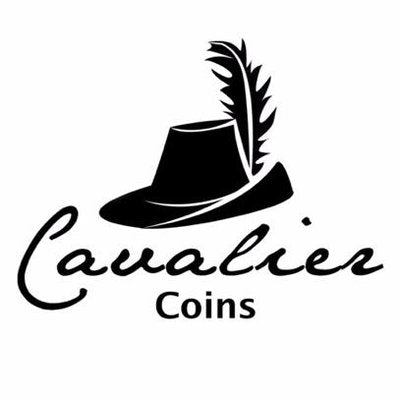Unearthing Treasure in Your Pocket Change
Discover six of the most valuable UK pennies, including the 1933 George V, the 1954 'Copper', and the 1841 Victoria 'Uncrowned'. This list details key features and estimated values for each coin, guiding both new and experienced collectors in identifying these rare and sought-after pieces. Could your old pennies be worth a small fortune? Learn which valuable UK pennies to look for and potentially uncover hidden treasure.
1. 1933 George V Penny
The 1933 George V penny reigns supreme amongst valuable UK pennies. Its legendary status stems from its extreme rarity, with only seven confirmed examples ever struck. These pennies were never intended for general circulation, but reserved for ceremonial purposes like placement beneath foundation stones of new buildings. This intended use, combined with its scarcity, has cemented the 1933 penny's position as the most sought-after coin in British numismatics, making it a holy grail for serious collectors.

This bronze coin, featuring the portrait of King George V on the obverse and the seated figure of Britannia on the reverse, weighs 9.4 grams and measures 30.8 mm in diameter. Its features are standard for pennies of that era, but its limited mintage transforms it from a common currency into a numismatic treasure. For collectors of valuable UK pennies, the 1933 George V penny is a pinnacle achievement.
Pros:
- Exceptional investment value: The 1933 penny offers an exceptional investment opportunity with its value consistently appreciating over time.
- Centerpiece of any collection: Its rarity and historical significance make it a prized centerpiece for any British coin collection.
- Well-documented provenance: The known history and documented ownership of existing examples adds to their authenticity and value.
- Global recognition: The 1933 penny is instantly recognizable to collectors and numismatists worldwide.
Cons:
- Extreme rarity: Acquiring a legitimate 1933 penny is incredibly challenging due to its limited mintage.
- High counterfeit risk: The coin's value makes it a prime target for counterfeiters, requiring extreme caution.
- Extensive authentication required: Verification by a reputable expert is crucial to ensure authenticity.
- Limited availability: Most genuine examples reside in museums like the Royal Mint Museum and the British Museum, making them inaccessible to private collectors.
Examples of Value: A 1933 George V penny sold at auction in 2016 for a staggering £72,000, highlighting its extraordinary value.
Tips for Collectors of Valuable UK Pennies:
- Authentication is essential: Always seek professional authentication from a reputable numismatic expert if you are offered a 1933 penny.
- Beware of bargains: Be extremely wary of any 1933 penny offered at a price that seems too good to be true. It's almost certainly a counterfeit.
- Study authentic examples: Familiarize yourself with the distinct characteristics of genuine examples to help identify potential counterfeits.
- Consider graded examples: Prioritize professionally graded examples from reputable grading services for added assurance of authenticity and condition.
Popularized By: The rarity and significance of the 1933 penny were initially brought to light by British numismatist H.W.A. Linecar. Its importance has been further acknowledged by the Royal Mint and showcased by prominent auction houses like Spink & Son, solidifying its place in numismatic history. This coin truly exemplifies the potential for seemingly ordinary items, like valuable UK pennies, to become extraordinary treasures.
2. 1954 'Copper' Penny
Among the most intriguing of valuable UK pennies is the 1954 'Copper' Penny. This coin's value stems not from its design, but from a fascinating production quirk. From 1937 onwards, British pennies were struck in bronze (a blend of 97% copper, 2.5% zinc, and 0.5% tin). However, in 1954, a batch of pennies was accidentally struck on older, pure copper planchets left over from pre-1937 production. This error resulted in coins with a subtly distinct colour and weight, transforming them into highly collectible error coins amongst UK valuable pennies.

The 1954 'Copper' Penny offers a unique entry point for collectors seeking valuable UK pennies. Its relative recency means that these error coins can still occasionally be found in circulation, adding a thrill of the hunt for new collectors. Unlike many other valuable pennies, the 1954 'Copper' Penny's distinction lies in its metallic composition rather than a design flaw. This makes it a particularly intriguing piece of British minting history, showcasing an accidental glimpse into the Royal Mint's processes. It features the familiar young portrait of Queen Elizabeth II by Mary Gillick, with the classic seated Britannia design on the reverse. Learn more about 1954 'Copper' Penny for additional valuation tips.
Features:
- Pure copper composition (instead of the standard bronze)
- Distinctive reddish coloration (brighter than standard bronze pennies)
- Queen Elizabeth II's young portrait by Mary Gillick
- Slightly different weight than standard 1954 bronze pennies
- Same Britannia reverse design as the regular issue
Pros:
- Relatively recent error, potentially discoverable in circulation
- Distinguished by material, not design, making it easier to initially spot
- Fascinating historical context
- More affordable than many other valuable UK pennies
Cons:
- Visual identification can be challenging; testing often required
- Prone to misidentification by inexperienced collectors
- Needs material verification for definitive authentication
- Less widely recognized than other key date or error pennies
High-grade examples of the 1954 'Copper' Penny have fetched impressive prices at specialized auctions, ranging from £500 to £800. Interestingly, the Royal Mint doesn't officially acknowledge this error in its records, adding another layer of mystique to this already fascinating coin.
Tips for Identifying a 1954 'Copper' Penny:
- Weight: Use a precision scale to compare the weight against standard 1954 bronze pennies.
- Colour: Look for a brighter, more reddish copper hue compared to the duller bronze.
- Professional Testing: If you suspect you've found one, consider professional authentication through X-ray fluorescence (XRF) analysis to confirm the composition.
- Preservation: Store any potential 1954 'Copper' Pennies in acid-free holders to prevent deterioration and maintain their value.
This error was initially popularized within British error coin specialist circles and through the works of numismatic authors like Michael Marsh. Online coin collecting forums, particularly in the 1990s, also played a crucial role in spreading awareness about this intriguing and valuable UK penny.
3. 1841 Victoria 'Uncrowned' Penny
Among the most valuable UK pennies, the 1841 Victoria 'Uncrowned' Penny holds a special place for collectors. This large copper coin represents a significant transitional period in British coinage during the early Victorian era. Its value stems from a combination of its historical significance, relative scarcity, and the distinctive 'Young Head' portrait of Queen Victoria, uniquely uncrowned. This makes it a highly sought-after piece for both seasoned numismatists and those new to collecting valuable UK pennies.

This particular penny stands out due to its pure copper composition (later pennies were bronze), its impressive size (34-35mm diameter compared to much smaller modern pennies), and its substantial weight of approximately 18.8 grams. The obverse features the Young Queen Victoria without a crown, a portrait engraved by William Wyon. The reverse depicts the classic image of Britannia seated with a shield. The coin's raised rim and detailed engraving add to its appeal.
Pros:
- Tangible piece of early Victorian British history: Owning this penny connects you to a pivotal period in British history.
- Impressive size and weight: The coin's substantial feel adds to its collectibility.
- Scarcity: The 1841 date had a relatively low mintage, increasing its value.
- Artistic merit: The portrait by William Wyon is considered a beautiful example of numismatic art.
Cons:
- Wear and tear: Many surviving examples show significant wear from circulation.
- Environmental damage: Copper is prone to corrosion and environmental damage.
- Rarity of high-grade examples: Uncirculated or minimally worn specimens are exceptionally rare and command high prices.
- Cleaning: Many examples have been cleaned, which unfortunately diminishes their value.
Examples of Value:
- A high-grade example sold at a Spink auction in 2018 for £2,400, demonstrating the potential value of these coins.
- The British Museum holds several fine specimens in their collection, further highlighting its numismatic importance.
Tips for Collectors of Valuable UK Pennies:
- Condition is key: Prioritize examples with minimal environmental damage and wear.
- Beware of cleaning: Examine the coin carefully for signs of cleaning, which can significantly reduce its value.
- Verify the date: The date can be worn or even altered, so careful verification is essential.
- Proper storage: Store your 1841 penny in a sulfur-free environment to prevent copper reactions and preserve its condition.
Key Figures:
- William Wyon: The chief engraver at the Royal Mint who designed the iconic 'Young Head' portrait.
- Queen Victoria: Her unprecedentedly long reign made her image on coinage instantly recognizable and historically significant.
- George Chetwynd: A prominent coin collector who meticulously documented Victorian coinage, contributing to the understanding and appreciation of coins like the 1841 penny.
The 1841 Victoria 'Uncrowned' Penny deserves its place on the list of valuable UK pennies due to its historical significance, scarcity, and distinctive features. It's a must-have for serious collectors and a fascinating piece of British history for anyone interested in numismatics.
4. 1926 Modified Effigy Penny
Among the valuable UK pennies, the 1926 Modified Effigy Penny stands out as a fascinating example of a transitional coin. This penny represents a subtle yet significant shift in the design of George V’s portrait during his reign. In 1926, the Royal Mint tweaked the King's image, creating two distinct varieties for that year. The modified version showcases a slightly different profile with more defined details in the king’s hair and beard compared to the standard 1926 penny. This makes the 1926 Modified Effigy Penny a highly sought-after piece among serious collectors specializing in the George V series, placing it firmly on the list of valuable UK pennies.

This valuable UK penny, composed of bronze (95.5% copper, 3% tin, 1.5% zinc), retains the standard 30.8mm diameter and 9.4-gram weight. While the reverse side featuring Britannia remains unchanged, the obverse showcases the modified portrait of George V. Its rarity, compared to the more common 1926 penny, contributes significantly to its value. This presents a unique opportunity for collectors, especially since its subtle differences often go unnoticed by casual observers. You can identify the Modified Effigy without specialized equipment, making it an accessible find in old collections and estate sales. Learn more about 1926 Modified Effigy Penny
Pros:
- Important transitional variant: Holds a significant place in British numismatic history, marking a design change in a widely circulated coin.
- Relatively unknown: Provides a collecting opportunity as many are unaware of its existence.
- Identifiable without specialist equipment: Allows for easier identification compared to errors requiring microscopes or other tools.
- Still discoverable: Can be found in circulation (though rarely) and more commonly in older collections.
Cons:
- Subtle differences: Requires careful observation to distinguish it from the standard 1926 penny.
- Often misidentified: Novice collectors may overlook or confuse it with the more common version.
- Value dependent on condition and identification: Accurate identification is crucial for proper valuation.
- Limited research: Fewer dedicated resources available compared to more widely studied coins.
Examples:
- A high-grade 1926 Modified Effigy Penny fetched £780 at a Baldwin's auction in 2019, demonstrating its potential value.
- The Royal Mint's own collection includes both 1926 varieties displayed side-by-side for comparison.
Tips for Identifying a 1926 Modified Effigy Penny:
- Compare with reference images: Focus specifically on the detailing of the King's hair.
- Use magnification: A magnifying glass or loupe will reveal the finer details of the portrait.
- Examine beard and hair rendering: Look for a more defined and detailed rendering in the modified version.
- Seek expert opinion: Consult a numismatist before paying premium prices to ensure accurate identification.
The 1926 Modified Effigy Penny's importance has been highlighted by figures like Bertram Mackennal, the original sculptor of the George V portrait, and numismatist H.W.A. Linecar, who meticulously documented numerous British coin varieties. Research from institutions like The British Numismatic Society further solidifies this penny's place amongst valuable UK pennies. Whether you're an expert numismatist, a new collector, or simply curious about the hidden treasures lurking in your change, this coin presents a unique opportunity to own a piece of British numismatic history.
5. 1922 Bronze Penny
The 1922 bronze penny stands as a testament to the economic turbulence that gripped Britain following World War I. Its extreme rarity makes it one of the most valuable UK pennies, a highly sought-after prize for collectors, and a fascinating window into a specific period of British history. For anyone serious about collecting valuable UK pennies, the 1922 bronze penny represents a key date within the George V series.
Following the First World War, Britain faced significant economic challenges. The Royal Mint, prioritizing higher denomination coinage and relying on existing circulating pennies, struck an exceptionally small number of 1922 bronze pennies. This incredibly low mintage has cemented its status as a numismatic rarity. Its scarcity, combined with its historical significance, contributes to its high value and enduring appeal among collectors.
Features:
- Composition: Bronze (95.5% copper, 3% tin, 1.5% zinc)
- Dimensions: 30.8mm diameter
- Weight: 9.4 grams
- Obverse: George V portrait by Bertram Mackennal
- Reverse: Britannia design, consistent with the period
- Key Feature: Extremely low mintage for circulation
Pros:
- A key rarity within the George V penny series, essential for completing a collection.
- Strong investment potential, exhibiting consistent appreciation over time.
- Historical significance, reflecting the post-WWI British economy.
Cons:
- High value makes it a prime target for counterfeiting and date alteration (often from 1920 or 1929 pennies).
- Genuine examples rarely surface on the open market.
- Even worn examples command high prices, making accurate condition assessment crucial.
- Can be confused with the more common 1922 farthing.
Examples of Value:
- A fine condition 1922 penny sold at a Spink auction in 2020 for £2,800. This exemplifies the substantial sums these coins can fetch.
- Reference specimens are held by institutions like the Royal Mint Museum and the British Museum, highlighting the coin's recognized numismatic importance.
Tips for Collectors:
- Authentication is paramount: Scrutinize the date to ensure it hasn't been altered. Compare the design details meticulously with verified authentic 1922 issues.
- Provenance and Certification: Prioritize purchasing examples with documented provenance or certification from reputable numismatic bodies.
- Magnification: Examine the coin under magnification for signs of tooling or manipulation around the date area.
Popularized By:
- Percy Metcalfe, who worked at the Royal Mint during the period, providing insights into the coin's production context.
- British coin catalogue publishers from the 1950s onwards, who recognized and documented its scarcity.
- Numismatist John Winstanley, whose research on mintage figures cemented the 1922 penny's reputation as a key rarity.
The 1922 bronze penny is more than just a valuable UK penny; it’s a tangible piece of British history. Whether you are a seasoned numismatist, a new collector, or simply fascinated by historical artifacts, this coin’s rarity, historical context, and investment potential make it a compelling addition to any collection.
6. 1807 George III 'Britannia' Copper Penny
The 1807 George III 'Britannia' Copper Penny holds a significant place among valuable UK pennies, not just for its age, but for its historical and technological importance. This hefty coin represents a pivotal moment in British minting, bridging the gap between hand-struck coinage and the modern era of machine production. For collectors of valuable UK pennies, the 1807 penny offers a tangible link to the Industrial Revolution. Learn more about 1807 George III 'Britannia' Copper Penny
This penny is part of the iconic "cartwheel" series, named for their large size and thick rims. Matthew Boulton, a pioneering industrialist, produced these coins at his Soho Mint using steam power – a revolutionary technique that transformed coin production. The 1807 issue stands out as one of the last of these large copper pennies before currency reforms, adding to its desirability amongst collectors of valuable UK pennies.
Features and Benefits:
- Pure Copper Composition: The coin's composition of pure copper gives it a warm, characteristic lustre, but also makes it prone to environmental damage.
- Imposing Size and Weight: Measuring 36mm in diameter and weighing approximately 28.3 grams, its size and weight are immediately impressive. This heft, however, also contributed to its impracticality for daily use and increased susceptibility to edge knocks.
- Distinctive Design: The obverse features a detailed laureate bust of George III facing right, while the reverse displays a seated Britannia with a shield and trident. The Soho Mint mark on the reverse confirms its authentic production. The design, by German engraver Conrad Heinrich Küchler, represents a high point of late 18th/early 19th-century coin artistry.
- Historical Significance: Minted during the Napoleonic Wars, the 1807 penny offers a glimpse into a turbulent period in British history.
Pros:
- Represents a pivotal moment in British minting technology.
- Impressive size and weight makes it a striking collector's piece.
- Historical significance from the Napoleonic War period.
- Strong artistic merit.
Cons:
- Large size made them impractical for everyday use, resulting in wear.
- Copper content makes them susceptible to corrosion.
- Often found with significant edge knocks.
- Premium prices even for moderately worn examples.
Examples of Value:
- A near-uncirculated 1807 penny sold for £3,200 at a DNW auction in 2017, highlighting the potential value of these coins.
- Both the British Museum and the Science Museum hold examples of the 1807 penny, showcasing its historical and technological significance.
Tips for Collectors of Valuable UK Pennies:
- Lustre: Check for the original copper lustre, as it significantly adds to the coin's value.
- Edge Condition: Inspect the edges carefully for damage, which can greatly impact the value.
- Soho Mint Mark: Ensure the Soho Mint mark is present to confirm authenticity.
- Storage: Store the coin in a controlled environment to prevent copper degradation.
Whether you are an expert numismatist, a new collector, or someone involved in the coin trade, the 1807 George III 'Britannia' Copper Penny deserves consideration. Its historical context, technological significance, and striking design make it a valuable and fascinating addition to any collection of valuable UK pennies.
Valuable UK Pennies Comparison
| Penny | 🔄 Implementation Complexity | 💡 Resource Requirements | 📊 Expected Outcomes | ⚡ Ideal Use Cases | ⭐ Key Advantages |
|---|---|---|---|---|---|
| 1933 George V Penny | Very high – rare ceremonial minting | Extensive authentication & expert advice | Exceptional investment & collector prestige | High-end collections and museums | Extreme rarity; famous provenance; high value |
| 1954 'Copper' Penny | Moderate – error from planchet mix-up | Material testing and precision weighing | Collectible error coin with moderate value | Affordable entry into error coins | Unique material error; accessible; interesting history |
| 1841 Victoria 'Uncrowned' Penny | High – scarce date, large copper coin | Conservation from corrosion damage | Valuable historical piece & sizable coin | Victorian era coin collections | Historical significance; artistic portrait |
| 1926 Modified Effigy Penny | Moderate – subtle design variation | Detailed visual comparison & magnification | Niche collectible with moderate market value | Transitional coin series collectors | Important variant; identifiable to specialists |
| 1922 Bronze Penny | High – very low mintage during post-WWI era | Provenance verification & expertise needed | Key rarity with strong investment potential | Serious collectors seeking rarity | Scarcity; historical importance; consistent appreciation |
| 1807 George III 'Britannia' Penny | High – early steam-minted, large copper coin | Protection from corrosion and damage | Historically significant & impressive size | Numismatic historical collections | Technological milestone; large, striking design |
Start Your Own Penny Hunt!
From the 1933 George V penny to the 1807 George III 'Britannia' copper penny, we've explored some of the most valuable UK pennies a collector can hope to find. Remember, rarity, condition, and historical significance all play a crucial role in determining a coin's worth. By understanding these key factors, you can effectively evaluate your own collection and identify potential treasures lurking within. Perhaps you have a 1954 'Copper' penny or even a rare 1922 Bronze penny hiding in plain sight!
The thrill of numismatics lies not only in the monetary value of these coins, but also in their historical connection to the past. Each valuable UK penny tells a story, offering a tangible link to bygone eras. For those intrigued by the tangible value of currency, consider further exploration into the enduring importance of physical money: Embrace the Supremacy of Cash.
Now is the perfect time to start your own penny hunt! Begin by checking your change, delving into old family coin jars, or visiting local coin fairs and antique shops. With a bit of knowledge and a keen eye, you might unearth a numismatic gem. Ready to expand your collection and delve deeper into the world of valuable UK pennies? Visit Cavalier Coins Ltd, a leading resource for historical and rare coins, including a wide selection of UK pennies.

